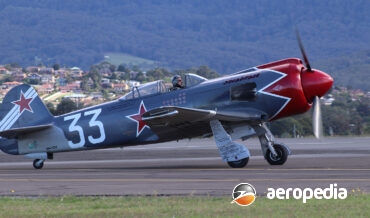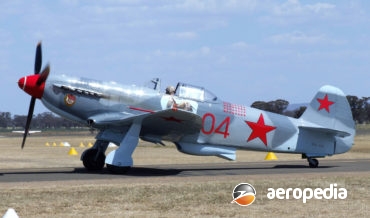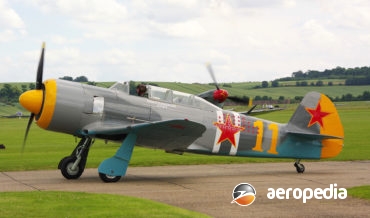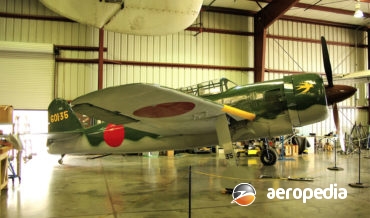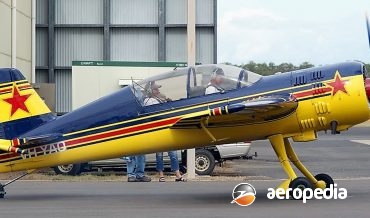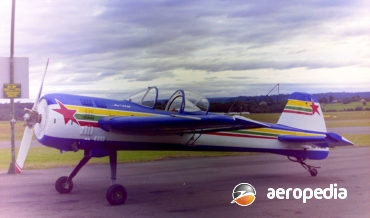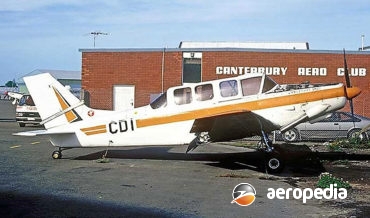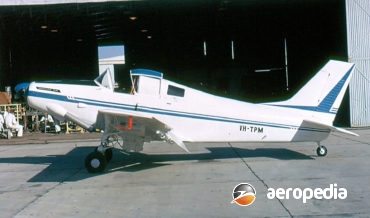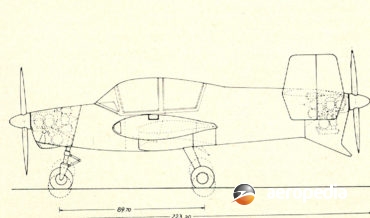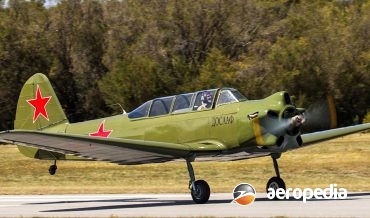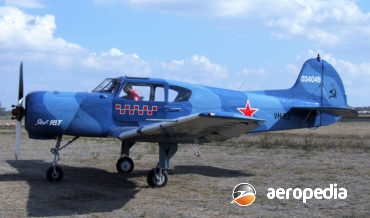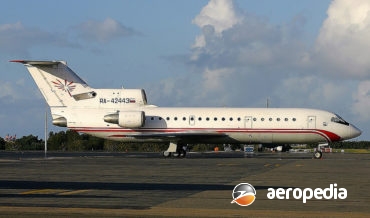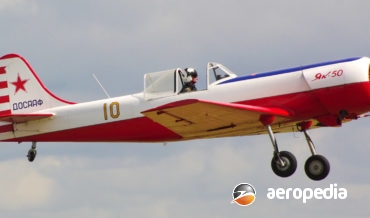All Contents
Contents
Two of these gyrocopters are known to have built and registered to the owner Andrew Carruthers at Wetherill Park, NSW, becoming VH-YPX (c/n Y4P 100008) and VH-YPZ (c/n Y4P 100009) on 4 August 2015.
David C. Eyre
- May 25, 2020
The Yak-7 was designed by Alexander S Yakovlev and was a development of the Yak-1, initially known as the I-26, which was first flown in 1940.
David C. Eyre
- March 23, 2020
The Yak 3 is one of a range of important Soviet aircraft emanating from the Design Bureau of Aleksandr Sergeyevich Yakovlev, the design of the Yak 3 commencing in 1941 based around the new VK-107 VEE-twelve engine, design parameters including least possible drag, smallest dimensions, and weight consistent with a
David C. Eyre
- May 19, 2019
The Yak-3U was a completely new design produced by the Yakovlev Design Bureau and used the light alloy stressed skin metal wing and tail surfaces of the latterly built Yak-3 fitted with the M-107 in-line V-12 engine but was built with a completely new fuselage fitted with a 14-cylinder two-row
David C. Eyre
- May 19, 2019
The Yakovlev series of fighters gained the distinction during World War II as being the Workhorses on the Eastern Front and, although the type entered service at the beginning of the War, it continued in service long after hostilities concluded, and saw service with a number of airforces, including the
David C. Eyre
- May 19, 2019
The Yakovlev Yak-11 (known to NATO as Moose) began to enter service with the Soviet Airforce in 1947 and bore some resemblance to the designer, Aleksandr Yakovlevs, wartime fighter designs, the wing, tail assembly, and undercarriage being similar to those of the Yak-9 single-seat fighter.
David C. Eyre
- May 19, 2019
In 1938 the Japanese Navy acquired from Germany an example of the Heinkel He 118 (4th prototype) and licence production rights.
David C. Eyre
- May 19, 2019
The Yokosuka E14Y was designed by Mitsuo Yamada of the Dai-Ichi Kaigun Koku Gijitsusho (the First Naval Air Technical Arsenal) as a small submarine-borne two-seat reconnaissance seaplane to operate on twin floats.
David C. Eyre
- May 19, 2019
Since the availability of aircraft from the Eastern Block in the late 1970s some hundreds of Soviet designed aircraft have become available to western pilots.
David C. Eyre
- May 8, 2019
The Yak 54 series of fully aerobatic light aircraft was announced in 1992, the prototype flying for the first time on 23 December 1993.
David C. Eyre
- May 8, 2019
The Yak-55 series was an all-metal cantilever monoplane designed for high performance aerobatics and was first seen at Spitzberg, Austria in 1982 at the World Aerobatic Championships when flown by Yakovlev Bureau test pilot Michael Molchaniuk.
David C. Eyre
- May 8, 2019
The one and only example of the Yeoman Hanes 250 aircraft was built initially at Bankstown by Yeoman Aviation as a single-seat agricultural monoplane, a Model 250R Cropmaster, and was registered as VH-DEQ (c/n 110) on 28 January 1964 to the manufacturers for testing.
David C. Eyre
- May 8, 2019
Yeoman Aviation Pty Ltd of Bankstown, NSW, was formed in 1958 as an associate company of Kingsford Smith Aviation Services Pty Ltd to specialise in the development and servicing of agricultural aircraft.
David C. Eyre
- May 8, 2019
The Libellula was designed by Mr Yager of Lewisham, NSW, being a light twin-engine touring aircraft for amateur construction with plans to be made available to builders.
David C. Eyre
- May 8, 2019
Towards the end of World War II the basic Soviet Air Force trainer, known as the UT-2M, received some development and improvements, including enclosed cockpits and changes to the undercarriage.
David C. Eyre
- May 8, 2019
The prototype of the Yak 18 series was flown for the first time in 1945 and, after entering production in 1947, saw extensive service with the Soviet Airforce, and the airforces of Austria, China, Czechoslovakia, North Korea, Poland, East Germany, Egypt and Hungary.
David C. Eyre
- May 8, 2019
The Yak-42 is a three-engine airliner which was developed to replace the Tu-134 and An-24 in passenger service in the Soviet Union.
David C. Eyre
- May 8, 2019
In 1937 Alexander Sergeivich Yakovlev designed the Ya-10, an open cockpit two-seat training aircraft with a 90-kw (120-hp) Renault engine.
David C. Eyre
- May 8, 2019
The Yak-50 was designed by Sergei Yakovlev and Y Yankevitch as an improved aerobatic aircraft to succeed the Yak-18 series at the 1976 World Aerobatic Championships which were held that year in the city of Kiev in the Ukraine.
David C. Eyre
- May 8, 2019
Recent Comments
Archives
Categories
- No categories
Categories
- No categories
Latest Posts
Newsletter




